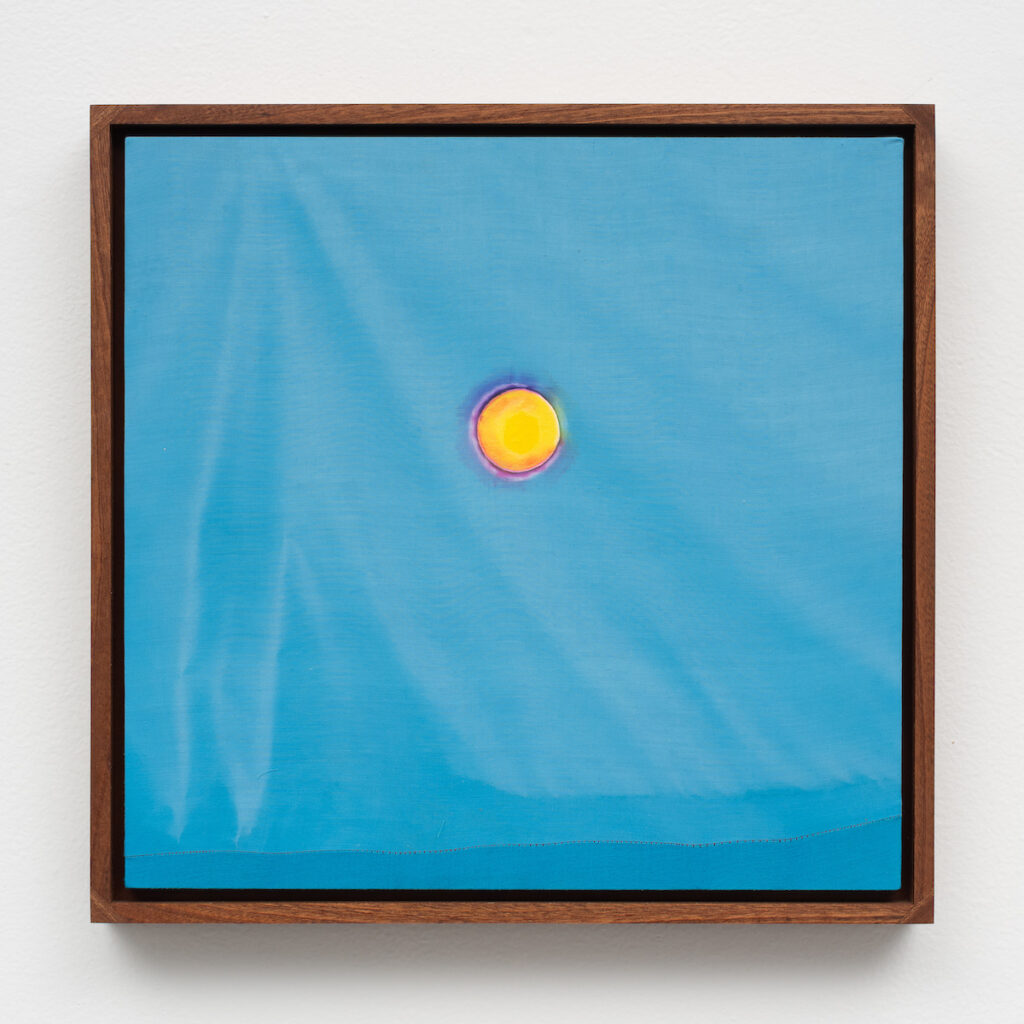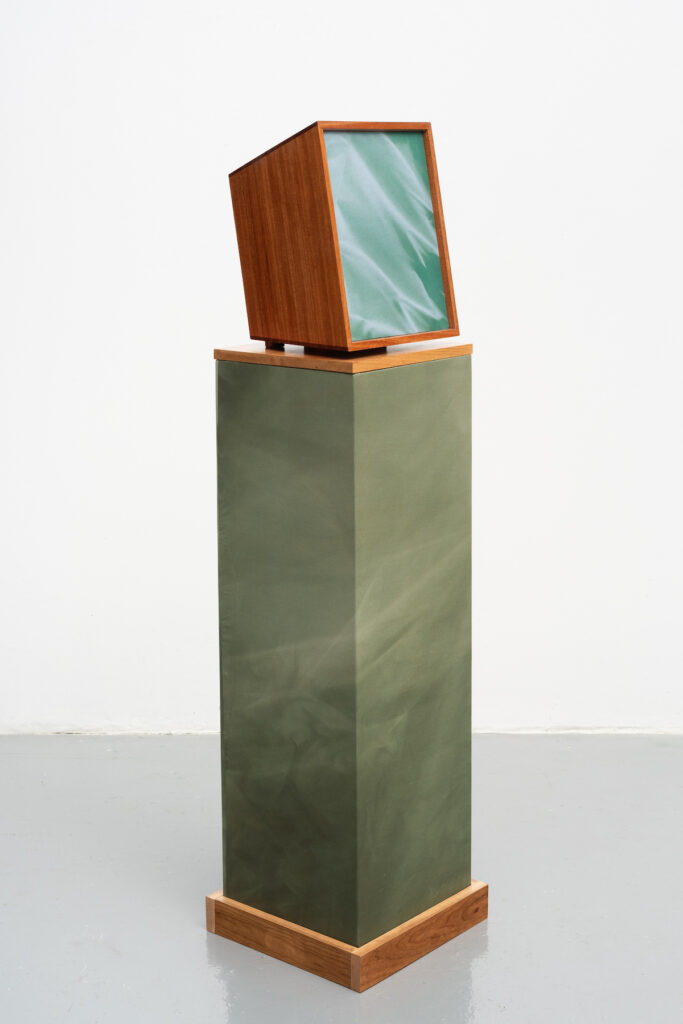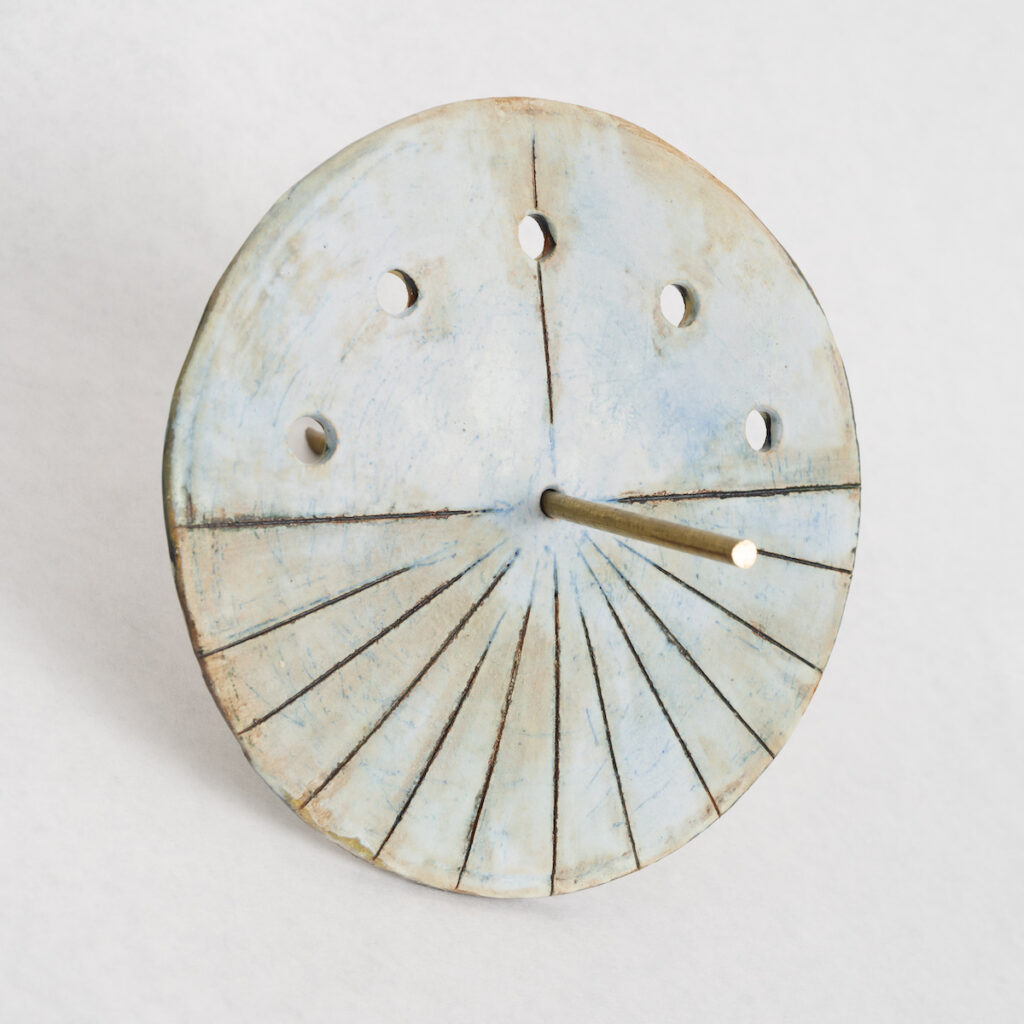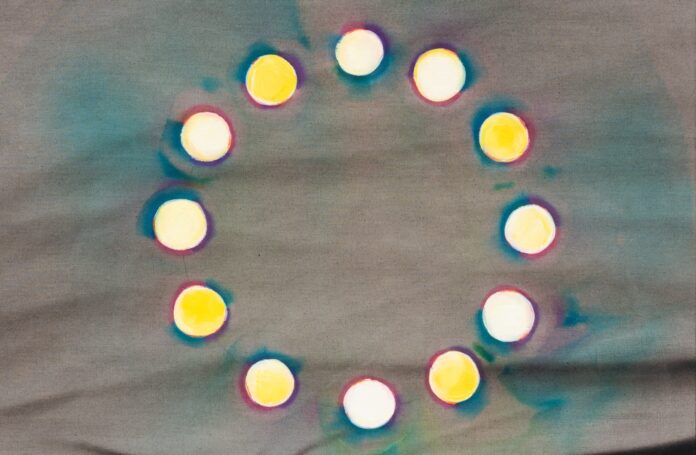In Christopher Robin Duncan’s solo show “SEASONS” (through July 29 at Rebecca Camacho Presents, the Oakland-based artist presents a series of mixed-media works where disks, in the form of records, cymbals, the sun, and a sundial suggest the progression of time. Most poignantly, the artist takes a long, slow approach, where time unfolds through the rotation of the Earth around the Sun, where months and seasons are key in the artist’s process and metaphor.
At the foundation of Duncan’s work, the artist has developed an innovative process of exposing untreated fabric to sunlight to create photographic-like contact prints. Rather than treating his fabric with the highly light-sensitive silver or iron compounds used in photographic chemistry, Duncan harnesses the intrinsic light-sensitivity of standard dye used in off-the-shelf fabric.
With untraditional materials, Duncan’s process requires months-long exposures, compared to the fractions-of-a-second of most contemporary analogue and digital photography and the minutes of 19th century processes, like cyanotype. Most interestingly, Duncan’s longer, slower approach to time mirrors the pace of the movement of the sun, where time and light coalesce as photographic light source and artistic content.

In the exhibition, Duncan’s exposed fabric appears in many walls works, but most excitingly in a series of four sculptural and sound works “SOUND IN TIME” (2023). In each work in the series, a wood speaker sits atop a pedestal. With black, green, blue, and red exposed fabric stretched around the pedestals and across the speaker faces, Duncan represents the four seasons: winter, spring, summer, and fall.
Each color mildly evokes the atmospheric color and changes in the natural landscape associated with the seasons, such that the black work suggests the gray skies of the winter when the sun is weaker and the green elicits the spring when new flora begin to bud. In all of the works, the fabric stretched around pedestals and across the speaker faces is full of luscious folds and striations, a result of six month exposures to the sun, and suggest the movement of the wind, waves, and cosmic time.

Complementing Duncan’s proto-photographic process, the idea of a time-based medium is reinforced as each speaker plays a sound composition of subtle tones mixing with the sound of the wind and ocean. Individually the sounds are complete, but collectively the tones complement each other and, most strikingly, suggest the sound of a year played coterminously.
The one questions I have regarding Duncan’s work is if he’s prioritizing aesthetic and process decisions over conceptual ones. While Duncan’s six-month exposures create high quality and aesthetically compelling images, his exposure time is twice as long as the three month period normally assigned to each of the seasons. Aligning the exposure time to the duration of each season—being three months—would transform the work into conceptual document or residue, but at the cost of such finely rendered images.

If Duncan chose a more conceptual-minded approach, exposing the fabric according to the season might leave traces in the images, such that the reduced sunlight hours, fog, and rain of our Northern California winters might produce a softer image, while the increased daylight hours of the summer might produce a crisper one. Given that the artist is using a sunlight to create images reflective of the seasons, pairing the season with its duration might expand the work’s formal and conceptual stakes.
Help us save local journalism!
Every tax-deductible donation helps us grow to cover the issues that mean the most to our community. Become a 48 Hills Hero and support the only daily progressive news source in the Bay Area.
As Duncan’s process and imagery ties us back to the sun, we are reminded that light and time are inextricably connected and part of a much grander system, where months and seasons are mere blips in our solar system’s timeline. While Duncan’s sun references suggests a metaphysical association, the artist gracefully refrains from pushing that angle, instead simply asking viewers to be present in the moment.
CHRISTOPHER ROBIN DUNCAN: SEASONS runs though July 29 at Rebecca Camacho Presents, SF. More info here.







